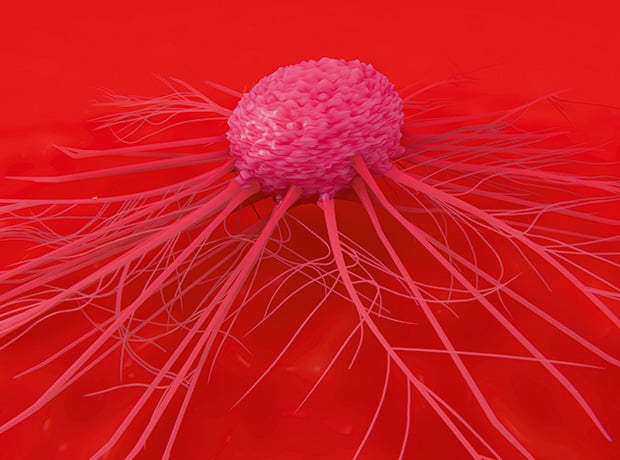Francis Crick scientists reveal how cells ‘raise the alarm’ when damaged or infected

The V-ATPase protein, V1H, was found to be involved in the process of raising the alarm
Scientists at the Francis Crick Institute have revealed how cells ‘raise the alarm’ when acids leak out of their compartments if damaged or infected with bacteria or a virus, which could be useful in developing new drugs.
The study published in Molecular Cell reveals that one protein known as V1H, which brings in machinery required for autophagy – the degradation of parts of the cell – is involved in this process.
Cells in the body need acidic compartments for digestion and recycling nutrients, of which acid is pumped into them by a group of proteins called the V-ATPase or the ‘proton pump’. When the cells are damaged or infected, acid leaks out of these compartments and cells need to be able to detect this.
The new study has revealed how cells are able to detect acid leaks and that the V-ATPase complex is able to raise the alarm if the system breaks down.
Researchers used specialised techniques to determine the structure of the pump and found that V1H in the V-ATPase complex was involved in the process of raising the alarm.
“We found that this damage-detection role of the V-ATPase is active in lots of situations, including in viral infection and following activation of certain immune receptors,” said Lewis Timimi, first author and student, Cell Biology of Infection Laboratory, the Crick.
In addition, the team found that a shorter form of V1H develops in nerve cells. However, this could not signal to autophagy proteins that the compartment had lost its acidity. Instead, researchers speculate that having this shorter form of V1H allows them to carry out their specialised function without raising alarm bells unnecessarily.
Timimi added: “By identifying the subunit of the V-ATPase responsible for this function, we were able to show how the state of the V-ATPase controls these damage responses.”
The team also believes that some microbes, such as salmonella, can evade detection by antagonising the proton pump.
This suggests that targeting this pathway could lead to new useful avenues when developing new drugs.







